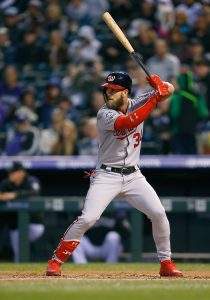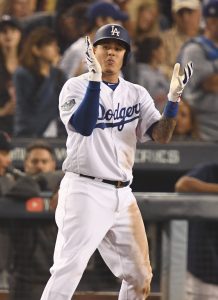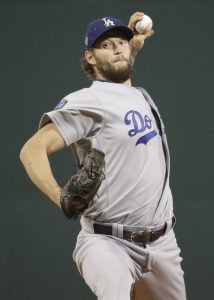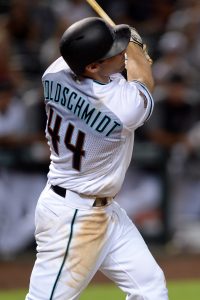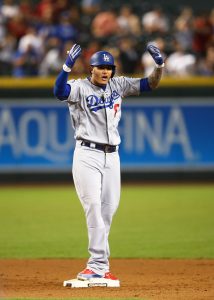Free agent lefty Patrick Corbin is arguably the top hurler on the market this offseason. The former Diamondback timed his ascension to dominance perfectly last season, posting career bests in strikeout rate (11.07 K/9), HR/9 (0.68), FIP (2.47), xFIP (2.61), ERA (3.15), fWAR (6.3) and games started (33) in a pivotal walk year for the 29-year-old. If not for the staggering wire-to-wire performance of Mets righty Jacob deGrom, Corbin’s defense-independent pitching marks would have paced the Senior Circuit, besting even the perennial virtuosity of two-time defending Cy Young Award winner Max Scherzer of the Nationals. In a free agent class replete with everything but top-end arms, Corbin has positioned himself squarely at the top: as our own Tim Dierkes, Steve Adams, and Jeff Todd see it, the hurler is the premier available starting pitcher, set perhaps to command a deal in excess of $125MM over multiple seasons.
Signs of caution, however, do mark the landscape. Though Corbin has fewer innings under his belt than most starters his age, the limited output came with a price – a Tommy John surgery following a breakout 2013 campaign knocked out all of the following season, plus half of the next, and a hopeful rebound in 2016 was derailed by shaky command and a dangerous propensity for giving up the gopher ball. Corbin also relies heavily on a wipeout slider that ranked as the league’s very best in 2018: after a lessened reliance on the pitch in the two-year aftermath of the surgery, the lefty has again ramped up its use, throwing it a shocking 41.3% of the time in 2018, the second-highest among all starting pitchers in baseball last year. The pitch, of course, is renowned for the stress it places on the thrower’s elbow, and has long been circumstantially linked to the UCL tear that precipitates Tommy John.
There’s also the body of work. Never a top prospect, Corbin seemed, after nearly 750 IP at the major-league level following the 2017 season, to have settled comfortably in a place quite near his long-ago projected role: Baseball America reports in 2010 and 2011 pegged him as a “number 3 or four” and “number four” starter, respectively, and the lefty’s minor league performance did little to discredit that view. Acquired from the Angels in a 2010 deadline deal that sent Dan Haren to Los Angeles, Corbin was a secondary piece in the return headlined by former top prospect Tyler Skaggs. The slider-slinging lefty did offer a quality 2013 season, posting an ERA/FIP/xFIP all between 3.40 and 3.50, but the performance coincided with a near all-time offensive low across the league – his park- and league-adjusted xFIP that year, after all, was just eight percent better than league average.
There were more stumbles to follow. A partial-year renaissance in 2015 was followed, in the middle of the next season, by a demotion to the bullpen; despite a career-high 53% ground-ball rate, Corbin’s walk rate ballooned to near four per nine, and he was too often bit by the long ball. Heavier slider use ushered in another rebound in 2017, but shades of last year’s dominance were still scarce: at the conclusion of that season, Patrick Corbin had, in 745 innings pitched, vindicated the scouts’ reports, offering up a perfectly harmonious 97 ERA-/97 FIP-, three percent better than the league average. ZiPS projected to hurler to be slightly better in the 2018 season, pegging him for a 94 ERA-/95 FIP- in the newly-humidor-scarred Chase Field.
So what, then, will teams make of the innings-eater-turned-ace in the new-look pitching environment? Will heavier bullpen dependence suppress the value of starting pitchers across the board? Will teams hold his mostly-middling ways against him, dismissing the recent ascension as outlier? Will the slider-heavy profile give them pause? Or will they double down, certain they’re acquiring a staff-leading ace far into the next decade? And, most notably for this piece, which teams seem mostly likely to fall into the category of the latter?
The Yankees, unsurprisingly, may be his top suitor. Corbin, who was raised outside Syracuse, NY, grew up a Yankee fan: “It would definitely be great to play there,’’ he told Bob Nightengale of the USA Today earlier this year. “I grew up a Yankee fan. My whole family are Yankee fans. My mom, my dad, my grandpa, everybody. Really, every generation of my family has been Yankee fans. Living up in Syracuse, everybody’s a Yankee fan. Not too many Mets fans up there.’’ The Bombers, who recently re-signed C.C. Sabathia for one final year, still face questions in the rotation’s back half, where a disappointing 2018 performance from Sonny Gray has left him squarely on the the block. The fit between the storied franchise and New York native seems an ideal one, especially in a park that rewards left-handed power like few others – Corbin, for his career, has been death on lefties, striking out nearly 31% of them and allowing just 20 total HR, good for a minuscule 2.54 xFIP against. The Yanks, who last year failed to eclipse the luxury-tax threshold for the first time in 15 seasons, seem primed and ready to make their periodic splash, but whether or not a free agent hurler is foremost in their efforts remains to be seen.
Next in line may be the Phillies, whose team ownership has made no attempt to hide its fervent pursuit of the market’s top assets, with principal owner John Middleton noting that the club could be “a little bit stupid about it.” After a systematic payroll reduction over the last few seasons, the Phillies finally re-announced their presence as a major offseason player with last year’s signing of Jake Arrieta, and again seem ready to pounce in the more bountiful class of 2018-’19. The rotation, which in ’18 had one of the league’s widest ERA-FIP gaps, likely due in large measure to the shoddy left-side defense of Rhys Hoskins, Maikel Franco, and Scott Kingery, is chock-full of controllable arms with significant upside, and posted sterling peripherals as a whole last season. Still, uncertainty hovers around the burgeoning careers of righties Nick Pivetta and Vince Velasquez, each of whom turned a second straight season of poor performance on the back of encouraging secondary stats, and Zach Eflin, who was downright dreadful in limited big-league action before 2018. With the club’s top pitching prospects at least a couple years away, and money to burn across the diamond, the Fightins may elect to prop up an area of strength as they enter a pivotal 2019.
The Braves could also be a major player here, what with the windfall they’ve received from increased attendance at their new Smyrna, GA, home, and question marks all across the rotation. After Mike Foltynewicz, the organization has little on which it can count next season – Kevin Gausman and Julio Teheran sprinted to the big leagues oozing promise, but have been mostly uneven since, and heralded rookie Sean Newcomb again battled the command issues that had so often plagued him in the minors. Touki Toussaint was a nice surprise, but he walked nearly seven men per nine in a brief MLB stint last season, and Calgary-born Mike Soroka spent much of the season’s second half on the shelf. The farm is brimming with starting pitching talent of all types, but none have asserted themselves as MLB-ready for 2019. There’s been little indication from GM Alex Anthopolous that the club is looking to make a major splash, but the up-and-coming Braves seem as good a fit as any for the 29-year-old Corbin, should the team decide to move in that direction.
The Astros, perhaps set to lose Dallas Keuchel and Charlie Morton to free agency, could also be a factor. Both Justin Verlander and Gerrit Cole are free-agents-to-be following the 2019 season, Lance McCullers Jr. just underwent Tommy John surgery and will miss the ’19 season, and the club’s glut of upper-level starting pitching depth has dwindled in recent years. With GM Jeff Luhnow announcing that the club will move Collin McHugh back to the rotation, two spots are still in flux. Luhnow seemed cryptic when asked about a possible increase in the 2019 payroll, but with so many rotation question marks in the years to come, a top-level arm would seem an ideal fit for the 2017 champions.
The Nationals, who’ve seen a once-historic rotation dwindle to just Max Scherzer, Stephen Strasburg, and possible non-tender candidate Tanner Roark, plus a series of who-knows and could-bes, also have the money and the need, should the club decide to pivot away from Bryce Harper. Still, with a whopping $245MM combined owed to Scherzer and Strasburg over the life of their deals, signing another high-priced starter would seem exceedingly unlikely.
Other teams, like the Dodgers, Twins, Giants, and Angels could be in play, to a lesser degree. Los Angeles has the money, of course, but has been loath to shell it out to a high-priced free agent from outside the organization under GM Andrew Friedman’s watch, and the club is already stocked with quality left-handed arms. The Twins have stripped their payroll to nearly nothing in recent years, but still have a bevy of intriguing rotation options and numerous holes on the offensive side. The Giants, of course, had the league’s highest payroll last season, but still owe over $120MM combined to Jeff Samardzija and Johnny Cueto, and don’t figure to be players in the offseason starting pitching market. The Angels, devoid now of anything resembling a top-end arm after Shohei Ohtani’s Tommy John surgery, could be a background lurker, though the club is still saddled with Albert Pujols’ albatross for another three seasons and may find other needs more urgent.
Which team will be the one to pull the trigger?

